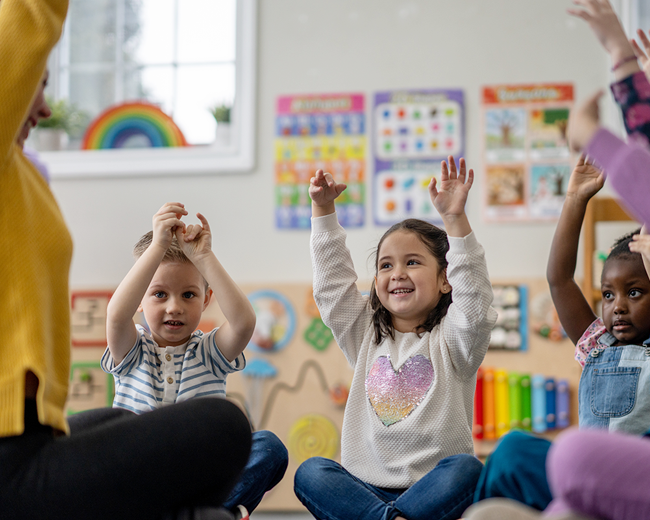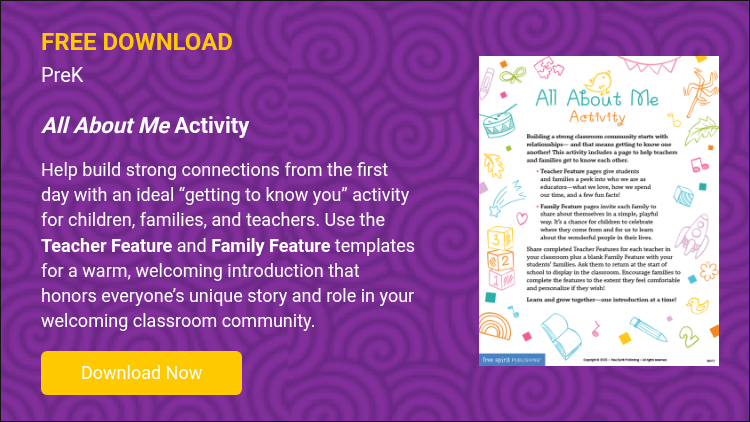Whenever we prepare to welcome students back to school, we thoughtfully consider our preschool classroom environment as the “third teacher.” We know that every corner of the room matters and details count! The environments we create set the tone for our class communities, help inform child-directed play, mediate behaviors, and so much more. It’s safe to say that classroom environments are pivotal to the school experience for kids and teachers alike.
In this blog, you’ll discover practical strategies to create an inviting preschool classroom that feels warm and safe for every child. From early family communication and home visits to slow starts and engaging classroom introductions, these tips will help you build strong connections and foster a sense of belonging before and during the school year. Whether you are preparing your first preschool classroom or looking to refresh your current space, these ideas will support you in making intentional, welcoming choices.
7 Ways to Welcome Preschoolers Before the School Year Begins
Welcoming preschoolers before the school year starts helps ease their transition and builds a sense of trust and excitement. These seven strategies provide practical ways to connect with children and families early, setting the stage for a positive year ahead.
Summer Letter
Whether it is a personal letter from a lead teacher or a letter from the program director, staying in touch with families over the summer helps everyone feel connected.
Depending on your program size, consider sending letters or postcards in the mail instead of emails. Receiving mail is a more kinetic experience than email, and it has a human connection that can be missed with electronic communication. This point of contact can be a simple greeting that highlights a few upcoming dates or events before the start of the school year. I like to include a photo of something I have done outdoors over the summer.
Home Visits
Home visiting is an important way to build connection and trust with families and students. While it may seem like a big task depending on your program size, introductory home visits can be a valuable step to start the year.
Consider scheduling 20-minute visits with each student and their family. Teachers can deliver materials, complete paperwork, and spend time focused on the child. Visits can take place outdoors or at a convenient location if meeting at home is challenging. These visits help create a shared experience that fosters trust and connection when the school year begins.
Open House or Mini-Tours
Many families appreciate the opportunity to visit the preschool classrooms and school environment before the first day. Offering an Open House with scheduled appointments or small group mini-tours allows children to explore the space alongside their parents or caregivers.
Make sure everyone understands the purpose of the visit: exploring the room and materials, meeting teachers, or doing a simple activity together. Encourage sensory exploration and playful interaction with classroom materials. These visits help children feel familiar and supported as they transition into the new school year.
Slow Start for New Students
Providing a slow start for new students can ease the transition by allowing them to experience the school environment without the usual hustle and bustle of the full class.
Schedule a few shorter days prior to the official start where new learners and their families can practice routines like separation and classroom engagement. This approach helps build confidence, trust, and a sense of community for new preschoolers and their families.
All About Me
Displaying child and family photos in your preschool classrooms is a well-established way to create a child-centered environment. Consider creating “Family Pages” for each student, featuring a photo or drawing and simple fill-in-the-blank information about the child’s name, age, family members, and something important to know about them.
Encourage parents to help their children with this activity, allowing kids to express themselves. Use these pages as introductions during morning meetings and keep them visible throughout the year to celebrate each child’s unique identity.
Room Introduction
Once initial connections have been made through letters, visits, and tours, it’s important to build trust by introducing the classroom together.
Take a fun “tour” of the classroom with all students, asking questions like “What can we do in this area?” or “How many children can sit at this table?” Invite returning students to share their knowledge of classroom routines and spaces. Reinforcing these ideas with the whole group helps children develop a sense of belonging and care for the environment.
Share About Yourself
At the start of the year, teachers can model relationship building by sharing about themselves. Create a personal “All About Me” page, share childhood photos, or talk about favorite hobbies.
Teacher Features can be revisited throughout the year to keep connections strong, reminding children that teachers are people, too.
Building an Inviting and Safe Preschool Classroom for Every Child

Taking time to create a beautiful, intentional, and inviting preschool classroom will no doubt influence how children feel welcomed and supported. By implementing these strategies, you can build a warm, safe preschool classroom environment that fosters confidence, curiosity, and connection for all children, families, and educators.
Creating a nurturing and welcoming preschool classroom takes thoughtful preparation and intentional connection. By reaching out to families early, easing transitions with slow starts and tours, and fostering meaningful relationships from day one, you set the foundation for a positive school year. Put these strategies into practice to build a safe preschool classroom where every child feels seen, valued, and ready to learn.

